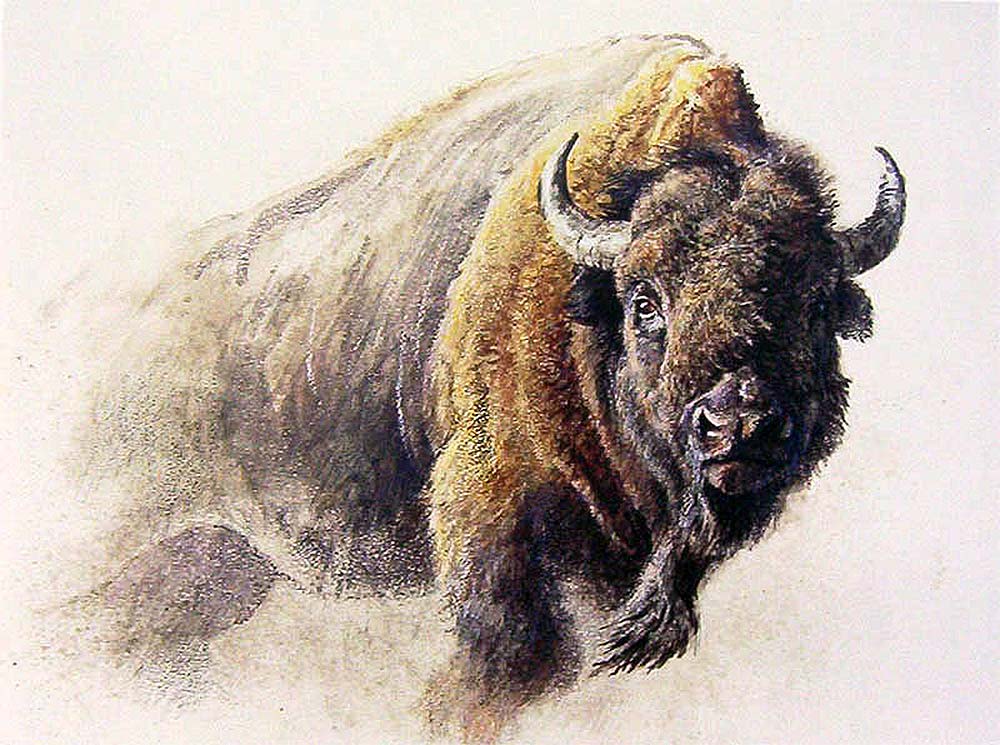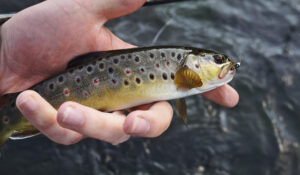The National Museum of Wildlife Art in Jackson Hole, Wyoming, is a unique and inspiring destination that bridges the gap between art and nature. Perched on a hillside overlooking the scenic National Elk Refuge, the museum blends seamlessly with its surroundings, offering visitors a serene experience both indoors and out. The museum is dedicated to wildlife art, featuring a collection that spans centuries, cultures, and artistic styles. With over 5,000 works in its permanent collection, the museum provides a thorough exploration of humanity’s relationship with nature through the lens of fine art.
The Setting and Ambiance
One of the first things visitors notice about the National Museum of Wildlife Art is its remarkable setting. The museum building itself is designed to blend into the rugged landscape, built from local stone to resemble an ancient cliffside fortress. This architectural choice emphasizes the museum’s connection to nature, reflecting its mission to showcase the beauty and majesty of wildlife. As you approach the museum, the sweeping views of the surrounding wilderness and the National Elk Refuge immediately set the tone for the experience to come. It’s as though you’re about to embark on a journey into the wild, with art as your guide.
Inside, the museum has a warm, welcoming atmosphere. Its gallery spaces are thoughtfully laid out, with large windows that bring in natural light and provide stunning views of the Wyoming landscape. The building’s design ensures that the artworks and the natural world outside complement one another. This harmonious blend of art and nature creates a peaceful, contemplative environment in which visitors can enjoy the art at their own pace.
The Collection
The museum’s collection is vast and varied, encompassing a wide range of artistic styles and time periods. It includes everything from classical European wildlife paintings to contemporary pieces by living artists. The diversity of the collection ensures that there’s something for everyone, whether you’re interested in hyper-realistic depictions of animals, impressionistic landscapes, or abstract interpretations of nature. The museum also places a strong emphasis on conservation and environmental awareness, encouraging visitors to think about the role that art plays in shaping our understanding of the natural world.
One of the museum’s key strengths is its ability to show how wildlife art has evolved over time. The collection highlights how artists from different periods and regions have interpreted nature and wildlife, from the highly detailed scientific illustrations of the 18th century to the more expressive, emotional depictions of wildlife in modern art. This gives visitors a deeper appreciation of how art can influence the way we perceive and interact with the environment.
Notable Artworks
While the museum houses thousands of artworks, a few standout pieces leave a lasting impression on visitors. These works not only represent the skill and talent of the artists but also embody the museum’s mission to celebrate the beauty and power of wildlife.
1. Carl Rungius – “Moose” (1930s)
One of the museum’s most iconic pieces is “Moose” by Carl Rungius, a renowned North American wildlife artist. Rungius, born in Germany in 1869, is known for his dramatic and realistic depictions of North American wildlife, particularly large mammals like moose, elk, and bighorn sheep. His work was instrumental in establishing wildlife art as a respected genre.

In “Moose,” Rungius captures the majesty of this massive animal in its natural habitat. The painting’s muted earth tones mirror the wilderness landscape, while the moose itself is depicted with a level of detail that brings the animal to life. What sets Rungius apart is his deep understanding of the animals he paints, a result of his extensive time spent in the field observing wildlife. His work strikes a balance between scientific accuracy and a deep reverence for nature, making it a perfect fit for the National Museum of Wildlife Art’s collection. This piece is a visitor favorite, showcasing the kind of timeless, iconic wildlife imagery that has come to define the museum’s collection.
2. Robert Bateman – “Chief” (1989)
Another important artwork in the museum’s collection is “Chief” by the celebrated Canadian artist Robert Bateman. Known for his evocative and often haunting depictions of wildlife, Bateman’s work stands out for its combination of realism and emotion. “Chief” is a portrait of a bison, a symbol of the American West, standing tall against a dark and stormy sky. The painting captures not only the physical strength of the bison but also its resilience and fortitude.

Bateman’s ability to imbue his subjects with a sense of personality and dignity is what makes his work so powerful. “Chief” is no exception. The bison in this painting exudes a quiet, stoic strength, standing firm despite the turbulent skies behind it. The dark, brooding atmosphere adds a layer of drama, reminding viewers of the bison’s historical significance and its near-extinction due to human actions. Bateman’s work often carries an environmental message, encouraging viewers to reflect on the impact of human activity on wildlife. “Chief” is a prime example of how wildlife art can go beyond simple depictions of animals to convey deeper messages about conservation and the natural world. Check out our Yellowstone Bison framed art print.
3. Rosa Bonheur – “Elk in a Forest” (1860s)
The museum’s collection also includes significant works from earlier periods, such as “Elk in a Forest” by Rosa Bonheur, a 19th-century French artist known for her exceptional ability to capture the beauty of animals. Bonheur was a trailblazer, both as a woman in the male-dominated art world of her time and as an artist who elevated animal painting to a fine art status. Her work is characterized by its meticulous attention to detail and her deep understanding of animal anatomy and behavior.
In “Elk in a Forest,” Bonheur depicts a peaceful scene of elk resting in a forest clearing. The light filters gently through the trees, casting a soft glow over the animals and their surroundings. The painting is a masterful study of light and texture, with Bonheur using delicate brushstrokes to capture the dappled sunlight and the intricate details of the elk’s fur. There’s a sense of tranquility in the scene, as if the viewer is witnessing a moment of calm in the otherwise wild and unpredictable life of the forest. Bonheur’s work is celebrated not only for its technical skill but also for its ability to convey a sense of empathy and respect for the animals she portrays.
Final Thoughts
The National Museum of Wildlife Art is more than just a museum—it’s a celebration of the natural world and our place within it. Its impressive collection of wildlife art, spanning centuries and continents, offers visitors a unique perspective on the beauty and diversity of the animal kingdom. Whether you’re an art lover, a nature enthusiast, or someone who simply enjoys beautiful landscapes and wildlife, this museum provides a rich, immersive experience that stays with you long after you leave.
From Carl Rungius’ majestic “Moose” to Robert Bateman’s powerful “Chief” and Rosa Bonheur’s serene “Elk in a Forest,” the museum’s collection offers something for everyone. Each piece tells a story, not only about the animals depicted but also about the artists’ relationship with nature and the role of art in conservation. If you ever find yourself in Jackson Hole, the National Museum of Wildlife Art is a must-visit destination.




